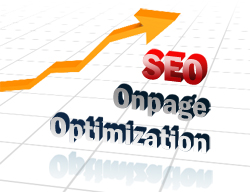
Wordpress on-page optimization is pretty simple, comparing with other platforms or pure html sites. In fact, it’s the best platform of SEO, both on-page and off page optimization. It’s because Wordpress has plugins, which are making your life so much easier, by automating everything.
In this on-page optimization guide you will learn how to use plugins to effectively dominate your niche.
So first of all you will need these 2 plugins – Wordpress SEO by Yoast and SeoPressor. First is free and the second one is paid (but highly recommended!). These are the best SEO plugins on the market, hands down. After you have got these plugins, install them and head to your Wordpress pages. It’s easier to start with pages.
Click on the first page to edit it and under the article you will see additional fields from SEO by Yoast plugin. In the title field you can copy the title of the article (post name), make sure post name has some great keywords – I presume you did a research before writing your posts for these particular keywords.
So if the title is researched, you can copy-paste it in the first field. If not, create a new one for search engines, based around one main keyword and one LSI keyword, max.
For description field you will need to use that main keyword and LSI keyword again. This description will be visible on Google, so write something that will help people to click on your link.
Use your main keyword in focus field section and the plugin will automatically calculate how good is your on-page optimization.
On-page optimization guide – let’s get to the actual page optimization.
For each page or post you will have to have H tags. H1,H2 and H3 are absolutely necessary, while H4, H5 and H6 are not that important, but they still can be included for additional bonus points. H tags are headings (H1) and subheadings (H2-H6). They must have your focus keyword inside.
Also, use your focus keyword few times throughout the article (not including your H tags), SeoPressor will automatically bold, underline and italize those keywords. Also you must use one picture with relevant alt tag (your main keyword).
After that is done, use your main keyword in SeoPressor keyword field, which is located directly under the article, above Wordpress SEO plugin. Once you publish the post it will calculate how good is your on-page optimization, giving different parameters than Wordpress SEO.
On-page optimization guide – final steps.
Now you just need to look at those parameters that plugins show you and follow directions that they show. Optimize your post until you see a green light in Wordpress SEO and 80%+ in SeoPressor, preferably 90% though.
Other than that, use keywords in your tags, and use relevant category to get more relevancy and better rankings on search engines.
In this on-page optimization guide you will learn how to use plugins to effectively dominate your niche.
So first of all you will need these 2 plugins – Wordpress SEO by Yoast and SeoPressor. First is free and the second one is paid (but highly recommended!). These are the best SEO plugins on the market, hands down. After you have got these plugins, install them and head to your Wordpress pages. It’s easier to start with pages.
Click on the first page to edit it and under the article you will see additional fields from SEO by Yoast plugin. In the title field you can copy the title of the article (post name), make sure post name has some great keywords – I presume you did a research before writing your posts for these particular keywords.
So if the title is researched, you can copy-paste it in the first field. If not, create a new one for search engines, based around one main keyword and one LSI keyword, max.
For description field you will need to use that main keyword and LSI keyword again. This description will be visible on Google, so write something that will help people to click on your link.
Use your main keyword in focus field section and the plugin will automatically calculate how good is your on-page optimization.
On-page optimization guide – let’s get to the actual page optimization.
For each page or post you will have to have H tags. H1,H2 and H3 are absolutely necessary, while H4, H5 and H6 are not that important, but they still can be included for additional bonus points. H tags are headings (H1) and subheadings (H2-H6). They must have your focus keyword inside.
Also, use your focus keyword few times throughout the article (not including your H tags), SeoPressor will automatically bold, underline and italize those keywords. Also you must use one picture with relevant alt tag (your main keyword).
After that is done, use your main keyword in SeoPressor keyword field, which is located directly under the article, above Wordpress SEO plugin. Once you publish the post it will calculate how good is your on-page optimization, giving different parameters than Wordpress SEO.
On-page optimization guide – final steps.
Now you just need to look at those parameters that plugins show you and follow directions that they show. Optimize your post until you see a green light in Wordpress SEO and 80%+ in SeoPressor, preferably 90% though.
Other than that, use keywords in your tags, and use relevant category to get more relevancy and better rankings on search engines.
 RSS Feed
RSS Feed